Table of Contents
The DSSSB Librarian Syllabus 2025 has been officially released by the Delhi Subordinate Services Selection Board (DSSSB) on its official website. Aspiring candidates are strongly advised to thoroughly review the DSSSB Librarian Syllabus 2025 to gain a comprehensive understanding of the topics and subjects included in the curriculum. This detailed insight will help them effectively prepare for the examination by covering the wide range of concepts required.
To assist candidates in their preparation journey, this article provides all the essential and relevant details related to the DSSSB Librarian Syllabus 2025. By exploring this information, candidates will be able to strategize their study plans and ensure they are well-equipped to tackle the exam with confidence.
DSSSB Librarian Syllabus 2025
The DSSSB Librarian Syllabus 2025 encompasses all the essential subjects and topics that candidates need to study to excel in the DSSSB Librarian Exam 2025. This syllabus serves as a comprehensive guideline to structure the preparation process effectively. The primary objective of the DSSSB Librarian Syllabus 2025 is to outline the scope of the curriculum while evaluating the candidates’ in-depth knowledge and understanding of the subject matter.
By thoroughly reviewing the syllabus, candidates will gain valuable insights into key aspects of the examination, including the exam pattern, marks distribution, sectional divisions, and marking scheme. Additionally, it provides a clear framework for understanding the overall structure and requirements of the exam, enabling candidates to prepare methodically and achieve success.
DSSSB Librarian Syllabus 2025: Overview
The DSSSB Librarian Syllabus 2025 outlines the curriculum for candidates appearing for the DSSSB Librarian Exam, conducted by the Delhi Subordinate Services Selection Board (DSSSB) as part of the DSSSB Teacher Recruitment 2025. This syllabus is crucial for aspirants to understand the structure and requirements of the exam thoroughly. The key details include the post name (Librarian), a negative marking scheme of 0.25 marks for incorrect answers, and updates on the exam date to be announced soon. Candidates can visit the official DSSSB website, www.dsssb.delhi.gov.in, for further updates and comprehensive information.
| DSSSB Librarian Syllabus 2025 | |
| Conducting Body | Delhi Subordinate Services Selection Board (DSSSB) |
| Recruitment | DSSSB Teacher Recruitment 2025 |
| Category | DSSSB Syllabus |
| Posts Name | Librarian |
| DSSSB Exam Date | Updated Soon |
| DSSSB Negative Marking | 0.25 marks |
| DSSSB Official website | www.dsssb.delhi.gov.in |
DSSSB Librarian Exam Pattern 2025
The DSSSB Librarian Exam Pattern 2025 provides detailed insights into the structure of the examination, including key aspects like marking scheme, total marks, and exam duration. The exam is a one-tier format featuring 200 multiple-choice questions, each worth 1 mark, to be completed in 2 hours. A penalty of 0.25 marks is applied for each incorrect answer. While Section-A does not have minimum qualifying marks, Section-B requires candidates to meet mandatory qualifying criteria specific to the domain subject. The final merit list is determined based on the combined aggregate marks of Section-A and Section-B. This structure ensures a comprehensive assessment of candidates’ knowledge and aptitude.
| DSSSB Librarian Exam Pattern 2025 | |
| Aspect | Details |
| Exam Pattern | One-tier exam conducted for DSSSB Librarian Recruitment Examination |
| Question Format | Multiple-choice based |
| Marking Scheme | Each question carries 1 mark |
| Negative Marking | 0.25 marks were deducted for each wrong answer |
| Exam Duration | 2 hours |
| Minimum Qualifying Marks | – Section-A: No minimum qualifying marks |
| – Section-B: Mandatory minimum qualifying marks applicable (domain subject-specific) | |
| Final Merit List Calculation | Combined aggregate marks of both Section-A & Section-B will be considered for preparing the list |
DSSSB Librarian Marks Distribution 2025
The DSSSB Librarian Marks Distribution 2025 provides a clear breakdown of the marks and questions for each section of the exam. The question paper is divided into two sections: Section A and Section B. Section A comprises 100 marks with 20 questions each on General Awareness, Reasoning Ability, Numerical Ability, Hindi Language Comprehension, and English Language Comprehension. Section B focuses on subject-specific questions, carrying 100 marks for 100 questions. In total, the exam consists of 200 questions worth 200 marks, ensuring a balanced evaluation of both general and subject-specific knowledge.
| DSSSB Marks Distribution 2025 | |||
| Section | Subject | Marks | Questions |
| Section A | General Awareness | 20 | 20 |
| Reasoning Ability | 20 | 20 | |
| Numerical Ability | 20 | 20 | |
| Hindi Language Comprehension | 20 | 20 | |
| English Language Comprehension | 20 | 20 | |
| Section B | Subject Concerned | 100 | 100 |
| Total | 200 | 200 | |
DSSSB Librarian Syllabus
The DSSSB Librarian Syllabus has been provide in detail for the Section A in the table below. The candidates are advised to read the following table carefully and get to know the topics they have to cover for each part of the examination.
| DSSSB Librarian Syllabus 2025 | |
| Section | Syllabus |
| Section A (General Awareness, General Intelligence and Reasoning Ability, Arithmetical and Numerical Ability, Test of Hindi Language and Comprehension and English Language Comprehension) | General Awareness encompasses a wide array of subjects including History, Polity, Constitution, Sports, Art and Culture, Geography, Economics, Everyday Science, Scientific Research, National/International Organizations/Institutes, etc. It also covers General Intelligence and Reasoning Ability, Analogies, Similarities, Differences, Space Visualization, Problem Solving, Analysis, Judgement, Decision Making, Visual Memory, Discrimination, Observation, Relationship, Concepts, Arithmetical Reasoning, Verbal and Figure Classification, Arithmetical Number Series, Arithmetical and Numerical Ability, Number Systems including Simplifications, Decimals, Data Interpretation, Fractions, L.C.M, H.C.F, Ratio and Proportion, Percentage, Average, Profit and Loss, Discount, Simple and Compound Interest, Mensuration, Time and Work, Time and Distance, Tables and Graphs, and Test of Hindi Language and Comprehension and English Language Comprehension which includes Vocabulary, Grammar, Sentence Structure, Synonyms, Antonyms, and their correct usage. |
| Section B ( Library and Information Science) | Library and Society, Laws of Library Science, Types of Libraries, Library Associations, Systems and Programmes, Library Movement and Library Legislation in India, Organizations and Institutions involved in the development of Library and Information Services-UNESCO, IFLA, FID, INIS, NISSAT, Library Management, Collection development – Types of Documents and Selection Principles, Acquisition Procedure, Acquisition of Journals and Periodicals, Preparation of Documents for use, Library Personnel and Library Committee, Library Rules and Regulations, Library Finance and Budget, Principles of Library Management, Library Organisation and Structure, Use and Maintenance of the Library – Circulation, Maintenance, Shelving, Stock Verification, Binding and Preservation, Weeding out, etc, Library Classification Theory and Practice, Library Classification Schemes – DDC, CC, UDC, Library Cataloguing Theory and Practice, Canons and Principles, Library Cataloguing Codes – CCC and AACR, Reference and Information Sources, Bibliography and Reference Sources – Types of Bibliography, Reference Sources- Dictionaries, Encyclopedias, Ready Reference Sources, etc, Sources of Information – Primary, Secondary, Tertiary, Documentary, Non-Documentary; EDocuments, E-Books, E-Journals, etc, Information Services, Concept and need for Information, Types of Documents, Nature and organization of Information Services, Abstracting and Indexing Services, Computer-based Information Services – CAS, SDI. |

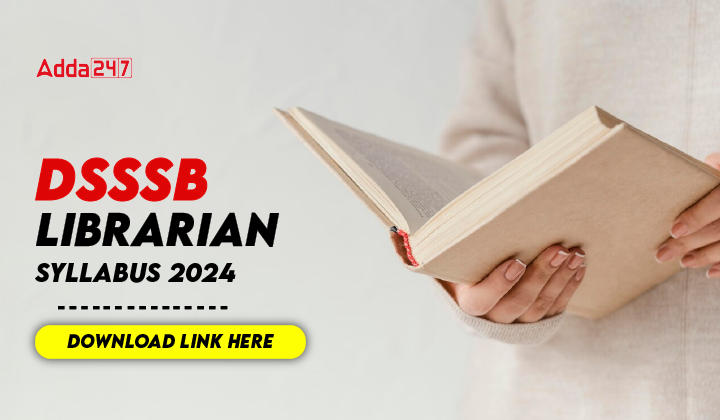
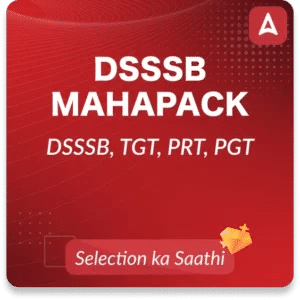

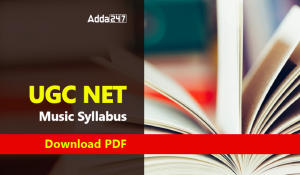 UGC NET Music Syllabus 2025, Download PD...
UGC NET Music Syllabus 2025, Download PD...
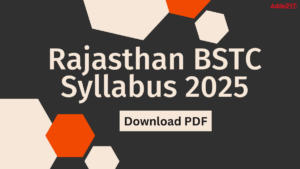 Rajasthan BSTC Syllabus 2025, राज�...
Rajasthan BSTC Syllabus 2025, राज�...
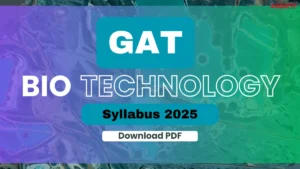 GAT B Syllabus 2025, Check Section-wise ...
GAT B Syllabus 2025, Check Section-wise ...














